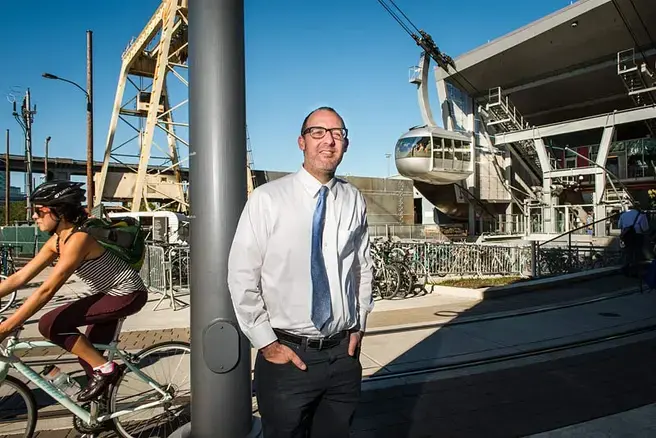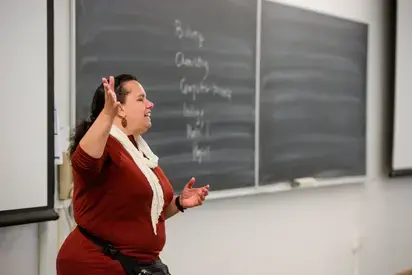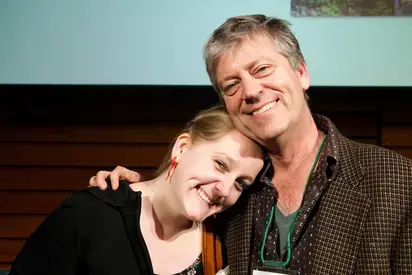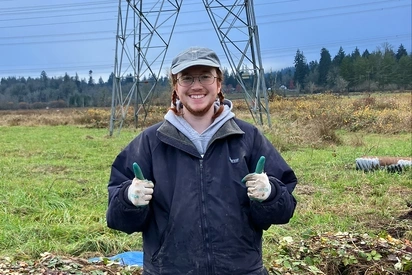
Over the past few decades, Portland has earned acclaim for its forward-thinking approach to such facets of city life as urban growth boundaries, public transit, biking, and neighborhood parks. This approach—emulated by municipalities around the globe—even has its own name: The Portland Model.
With a population of 600,000 and growing, the city isn’t resting on any of its planning laurels. It’s tackling current challenges, including issues related to changing demographics, social disparities, congestion, employment, and climate change. And it has a longer-range vision of how it wants to be in the year 2035, when forecasters predict nearly a million people are likely to call it home.
This vision is articulated in the Portland Plan, the city’s strategic roadmap for future growth and development. Eric Engstrom ’91, a principal planner for the Portland Bureau of Planning and Sustainability, played the lead role in orchestrating the initiative, from start to finish.
A city planner who had a rural Oregon upbringing, Engstrom oversaw the development of the plan, an effort of supreme collaboration that has roots in his Evergreen education.
He worked on the project—along with his staff of 15 and scores of other people at public agencies operating in the city—for four years, until the City Council unanimously adopted the finalized plan in April 2012. It was shaped by several years of research and fact-finding; the creation of more than a dozen background reports; a few hundred community meetings, with both grassroots organizations and elected leadership; 17,000 comments from residents, academics, businesspeople, nonprofit leaders, and other community members; and the cooperation of 30 local and state agencies and organizations.
“My job,” said Engstrom, ”was to pull the different elements together, manage staff who worked for a dozen different agencies, and track the logistics of producing the plan. I worked a lot with political leadership, including [former] Mayor Sam Adams, who provided the political capital, and a lot with really smart staff who provided the good ideas. And I had the support of agency leadership, who stood behind our ideas and helped keep us focused.”
The plan is unique not only in its inclusiveness—citizen participation was a key component in its development—but also its focus on equity as its core principle and the foundation for its other major goals: fostering the prosperity, health, and education of every Portlander. All of these priorities were identified through the involvement of the community.
In September, the plan’s Healthy Connected City strategy won a City Climate Leadership Award from the international C40 Cities Climate Leadership Group and Siemens. This strategy calls for bringing so-called complete neighborhoods to 80 percent of the city’s population by 2035, up from the current 45 percent. In a complete neighborhood, residents can easily access everything they need— schools, shops, jobs, parks, pubs, etc.—without driving.
A resident Portlander since 1993, Engstrom has been employed with the city’s planning department for 16 years. He got his start as an intern while working on his master’s in urban and regional planning at Portland State University—a turn he took because he was “interested in making a difference in reducing our impact on the planet.”
He came to the conclusion that “the biggest opportunity to do that is in cities,” after studying environmental science, communications, social change, and political economy at Evergreen, and then finding work after graduation with the Washington Department of Natural Resources as a forest technician doing old-growth forest surveys in spotted owl territory around the Olympic Peninsula. “I started out in the woods,” he said, “but there’s a limit to how many trees you can inventory.”
Since moving to the city, he’s worked on a variety of land use and strategic planning issues, including infill development strategies (to further develop vacant or underused parcels within already-developed areas), protection of urban natural areas, and reforming zoning codes to make it easier, for instance, to build accessory dwelling units or put solar panels on historic buildings.
The comprehensive and strategic planning group he manages deals with “mostly big-picture, long-range planning to prepare the city for the future,” he said, “We function like a strategic planning group for the City Council. We identify trends, analyze them, and instigate change.”
For the Portland Plan, he said, “Based on the trends we were tracking, including demographics and racial and social issues, we needed to retool the way we do business with an eye toward the future.”
As an agent of change, Engstrom spends much of his time working with other agencies, from TriMet, the regional public transit organization, to the county government and school districts, to understand their strategic plans, break down silos, and develop citywide plans in which all interests are taken into account. It’s a skill he said that “goes back to Evergreen’s interdisciplinary education, thinking across broad topics.”
In his job of shepherding his community’s shared vision for defining and creating a sustainable future—as throughout his career—Engstrom often draws on his Evergreen experience: “Working in planning,” he said, “is a bit like an Evergreen seminar. It connects lots of different topics together.”




